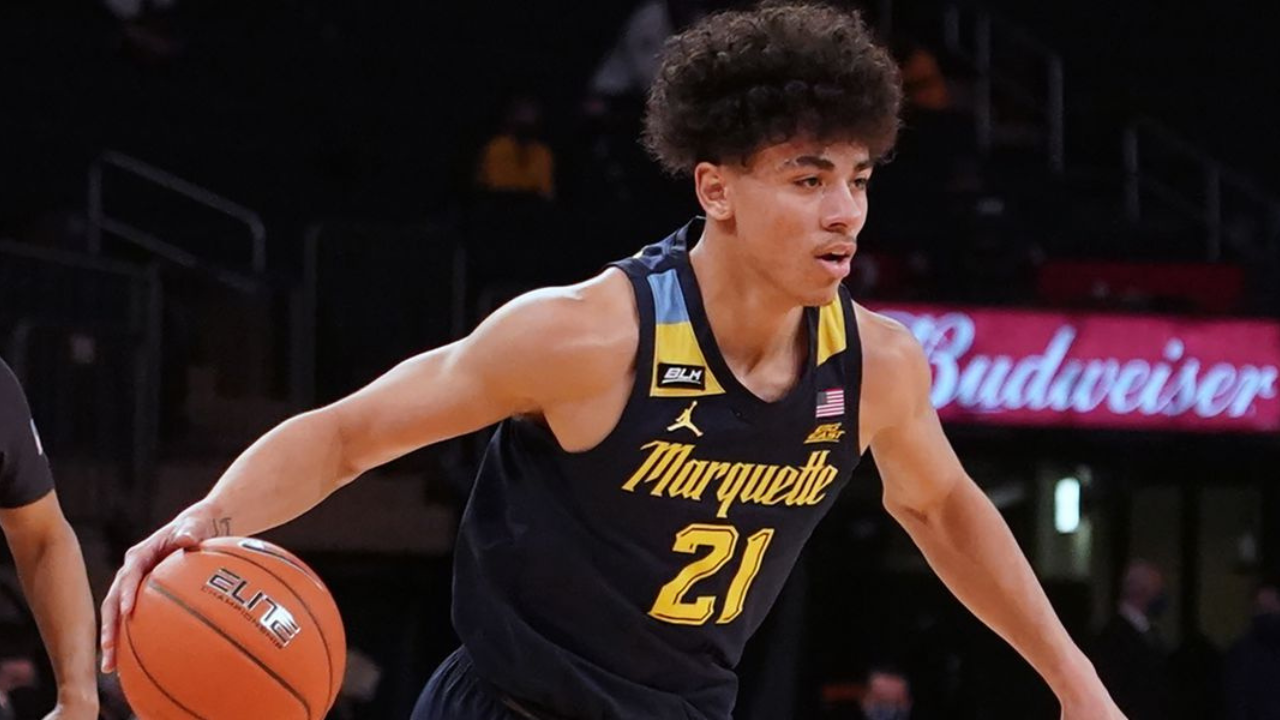Once upon a time, Gary Trent jr. was the only Raptor who performed one vital job on the court. That helped him immensely:
Most of all, there is nothing like Trent in Toronto. He is unique — the only guard scorer on the roster. When he touches the ball, he is asked simply to score. And he does — namely by keeping turnovers incredibly low, hitting 38.3 percent 3-point shooter, and being an above-average pullup shooter, especially from deep, All told, he is the points-per-touch king on the Raptors. But so much of that is not just about him, but about his comparison to the other players on the roster.
Now the Raptors have addressed that issue. (Kind of.) Immanuel Quickley has been drilling his triples off the catch for Toronto. Even though he’s struggled as a point guard at times for the Raptors, when he lets his legs do the work and transitions into a cutting off-ball guard, he has excelled. Gradey Dick has been on the come up recently in a big way. Even though Kelly Olynyk hasn’t hit his triples yet in Toronto, he’s a proven floor-spacer. Jordan Nwora and Ochai Agbaji are less proven but still threatening.
And Trent’s on-off numbers have predictably sunk slightly since the Raptors added other shooters. He still has a positive offensive on/off rating since Jan. 1, at plus 2.8. He’s a very good shooter, and he’s been on a hot streak! But it was plus-4.4 before the Raptors traded away OG Anunoby. Context matters, and it has no longer been as beneficial to Trent.
On the other hand, context has shifted to greatly benefit RJ Barrett instead.
In trading away Pascal Siakam and Anunoby, the Raptors added lots of shooting, but they lost some of the most valuable finishers on the team. Anunoby never became a great self-creator in driving to the rim, but he was a terrific finisher when his shots were created by others. He has shot at or above 70 percent at the rim virtually every season of his career. And Siakam was the team’s most efficient and highest-volume driver.
With them gone, Barrett has been virtually the only Raptor picking up the driving slack outside of Scottie Barnes. Barnes is the alpha and omega of the team, of course, but someone has to do something with the ball once he gives it up. That job has frequently fallen to Barrett.
Barnes has been terrific as a primary for the Raptors this year. Possessions on which Barnes has run a pick and roll or a handoff or touched the ball in the post have all been terrific for the Raptors this season. And yet his own scoring efficiency in those moments hasn’t been so consistent. So why have the possessions worked so well? Largely because Barnes is drawing tons of defensive attention and either hitting the home-run pass to his big or a cutter, or because he swings the ball to the other side of the court for someone else to attack the tilted defense.
Barrett has been the best player in Toronto (at least, among those still in Toronto) at doing so. He has driven with commitment, pounding the rock as deep as possible. He has the highest frequency of drives on the team. He has touched the paint with as much determination as a toddler clutching the remote. He just won’t let go. And it has worked for Toronto. Partially because no one else can do it nearly as well, and partially because Barrett, simply in a vacuum, has been excellent.
The unlikely thing about it is that Barrett was not this player in New York. Like, ever. Barrett has been the second-best driver on Toronto (behind only Barnes), and the gap between him and third place (among players still on the team) has been enormous — 1.03 points per chance on a possession featuring a Barnes drive versus 0.88 points per chance on a possession featuring a Quickley drive. That’s the difference between above average and well below it. The thing is, in New York he was the second-least efficient driver this season; a possession featuring a Barrett drive as a Knick was worth 0.88 points per chance. He had some slightly higher seasons, but he never cracked the 1.0 barrier.
So what changed?
Mostly, the simple stuff. He’s taking the space he’s given and not trying to force it when he’s not given space. If he’s overplayed, he’s cutting back the other direction. He is taking by far the highest-of-his-career share of his shots from the rim. (It’s actually been in the 99th percentile for his position as a Raptor — the man is getting to the rim.) But he is also attempting the fewest shots per drive (on just 55.9 percent of them) of his career and passing on the highest rate (23.5 percent). While he is also averaging the highest rate of turnovers per drive, that comes with the territory of shooting less and passing more. It has helped, all taken into consideration. He’s also been significantly more efficient on the actual shots he’s taking, at almost 60 percent on shots taken near the basket after driving, after never before reaching 50 percent in a single season as a Knick. That helps, too. (He’s actually shooting a career-best from basically every area of the floor.)
Will it stick around? Hard to say. At least, the decision making has been much better, and that’s not something that can be chalked up to variance. Efficiency on actual shots can be variance, but it could equally be the result of better choices on drives leading to better shot quality at the rim. (Which, by the way, has also been the highest of his career, so there’s something to that theory.)
But the necessity of someone doing what Barrett does will remain in Toronto. He could miss a few more shots around the rim and still be vital to the Raptors. The point isn’t so much that he’s making everything at the rim. It’s that he’s getting there in the first place. With ferocious determination. He has made himself into the tracks upon which the train glides when it comes to Toronto’s offensive process. The cutting and initiation have dipped in Toronto, but the driving, oh man the driving — his best skill has fit into Toronto like a paycheck into an empty account.
With Trent, someone had to hit triples for the Raptors without holding onto the ball. It helped the team that he could do so, and it helped him that basically no one else could. The same is now true for the Raptors when it comes to Barrett. Drives have been a problem for the Raptors for a long time, so this is nothing new. Now it’s just Barrett benefiting from the contextual lack, rather than Siakam.
It’s fantastic for Barrett that he has improved at driving the ball in Toronto. And it’s just as beneficial for him that he’s the only non-Barnes who can do it. But if Toronto is ever going to be a great team again (or even a good one), it will need more than just a small handful of players who can do crucial things on the court. Having one low-usage shooter was not a good thing for the Raptors, even if it helped Trent. Having one second-side driver is not a good for the Raptors, either. Barrett has been a fantastic Raptor. But the Raptors won’t be fantastic until the context is less beneficial for him.



